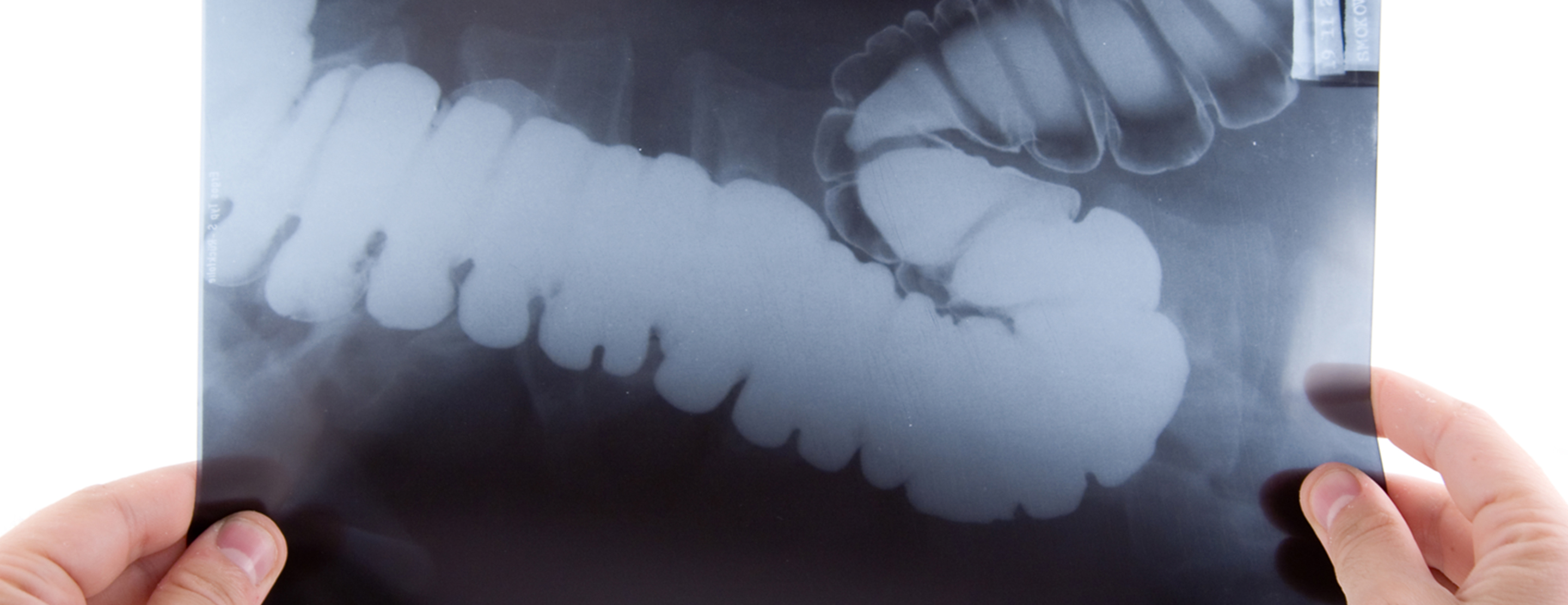
Abdominal x-ray
Definition
An abdominal x-ray is an imaging test to look at organs and structures in the abdomen. Organs include the spleen, stomach, and intestines.
When the test is done to look at the bladder and kidney structures, it is called a KUB (kidneys, ureters, bladder) x-ray.
Alternative Names
Abdominal film; X-ray - abdomen; Flat plate; KUB x-ray
How the Test is Performed
The test is done in a hospital radiology department. Or, it may be done in the health care provider's office by an x-ray technologist.
You lie on your back on the x-ray table. The x-ray machine is positioned over your abdominal area. You hold your breath as the picture is taken so that the picture will not be blurry. You may be asked to change position to the side or to stand up for additional pictures.
Men will have a lead shield placed over the testes to protect against the radiation.
How to Prepare for the Test
Before having the x-ray, tell your provider the following:
- If you are pregnant or think you could be pregnant
- Have an IUD inserted
- Have had a barium contrast x-ray in the last 4 days
- If you have taken any medicines such as Pepto Bismol in the last 4 days (this type of medicine can interfere with the x-ray)
You wear a hospital gown during the x-ray procedure. You must remove all jewelry.
How the Test will Feel
There is no discomfort. The x-rays are taken as you lie on your back, side, and while standing.
Why the Test is Performed
Your provider may order this test to:
- Diagnose a
pain in the abdomen or unexplainednausea - Identify suspected problems in the urinary system, such as a
kidney stone - Identify
blockage in the intestine - Locate an object that has been swallowed
- Help diagnose diseases, such as tumors or other conditions
Normal Results
The x-ray will show normal structures for a person your age.
What Abnormal Results Mean
Abnormal findings include:
- Abdominal masses
Buildup of fluid in the abdomen- Certain types of
gallstones - Foreign object in the intestines
- Hole in the stomach or intestines
- Injury to the abdominal tissue
- Intestinal blockage
- Kidney stones
Risks
There is low radiation exposure. X-rays are monitored and regulated to provide the minimum amount of radiation exposure needed to produce the image. Most experts feel that the risk is low compared to the benefits.
Pregnant women and children are more sensitive to the risks of the x-ray. Women should tell their provider if they are, or may be, pregnant.
References
Tomei E, Cantisani V, Marcantonio A, D'Ambrosio U, Hayano K. Plain radiography of the abdomen. In: Sahani DV, Samir AE, eds. Abdominal Imaging. 2nd ed. Philadelphia, PA: Elsevier; 2017:chap 1.
Review Date: 02/07/2019
The information provided herein should not be used during any medical emergency or for the diagnosis or treatment of any medical condition. A licensed physician should be consulted for diagnosis and treatment of any and all medical conditions. Call 911 for all medical emergencies. Links to other sites are provided for information only -- they do not constitute endorsements of those other sites. Copyright ©2019 A.D.A.M., Inc., as modified by University of California San Francisco. Any duplication or distribution of the information contained herein is strictly prohibited.
Information developed by A.D.A.M., Inc. regarding tests and test results may not directly correspond with information provided by UCSF Health. Please discuss with your doctor any questions or concerns you may have.





